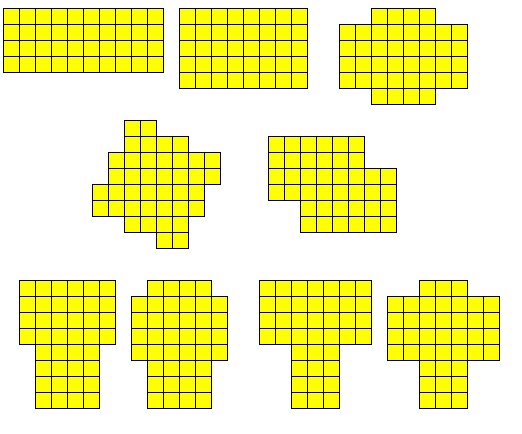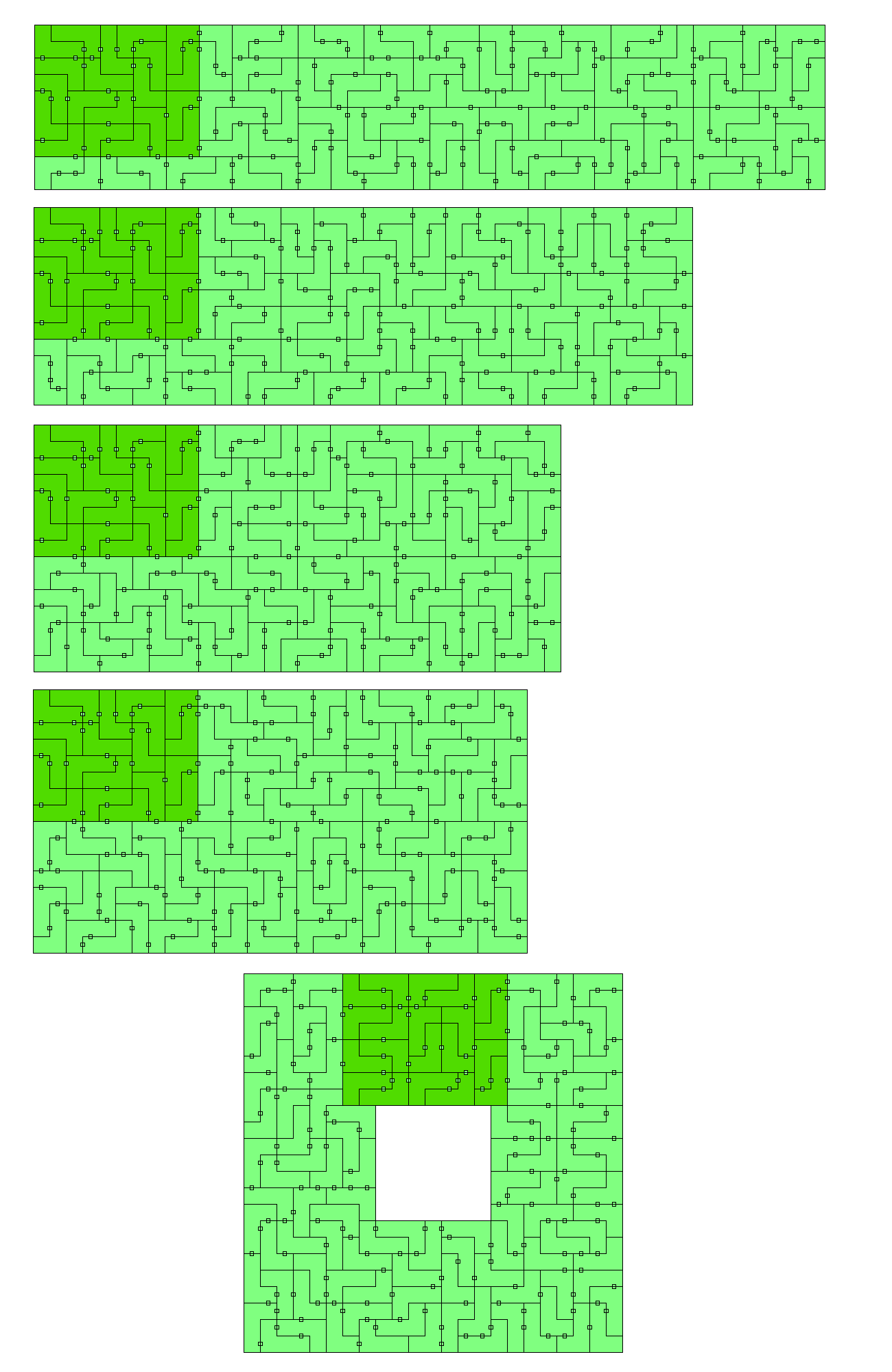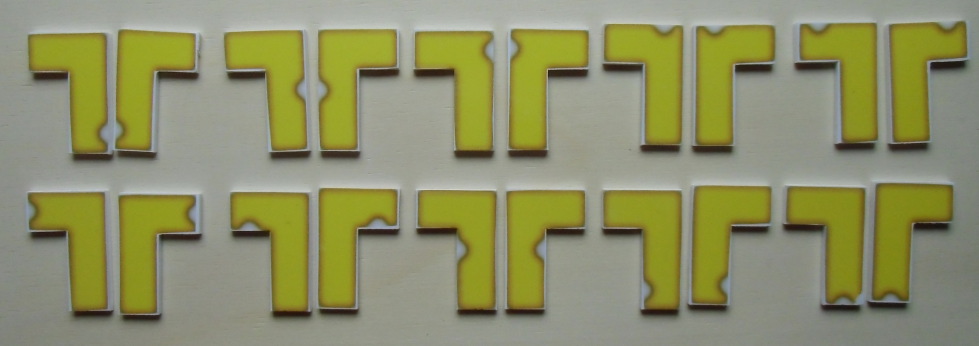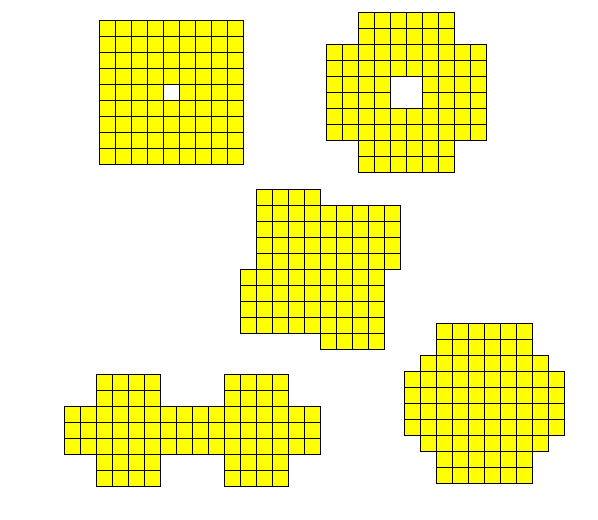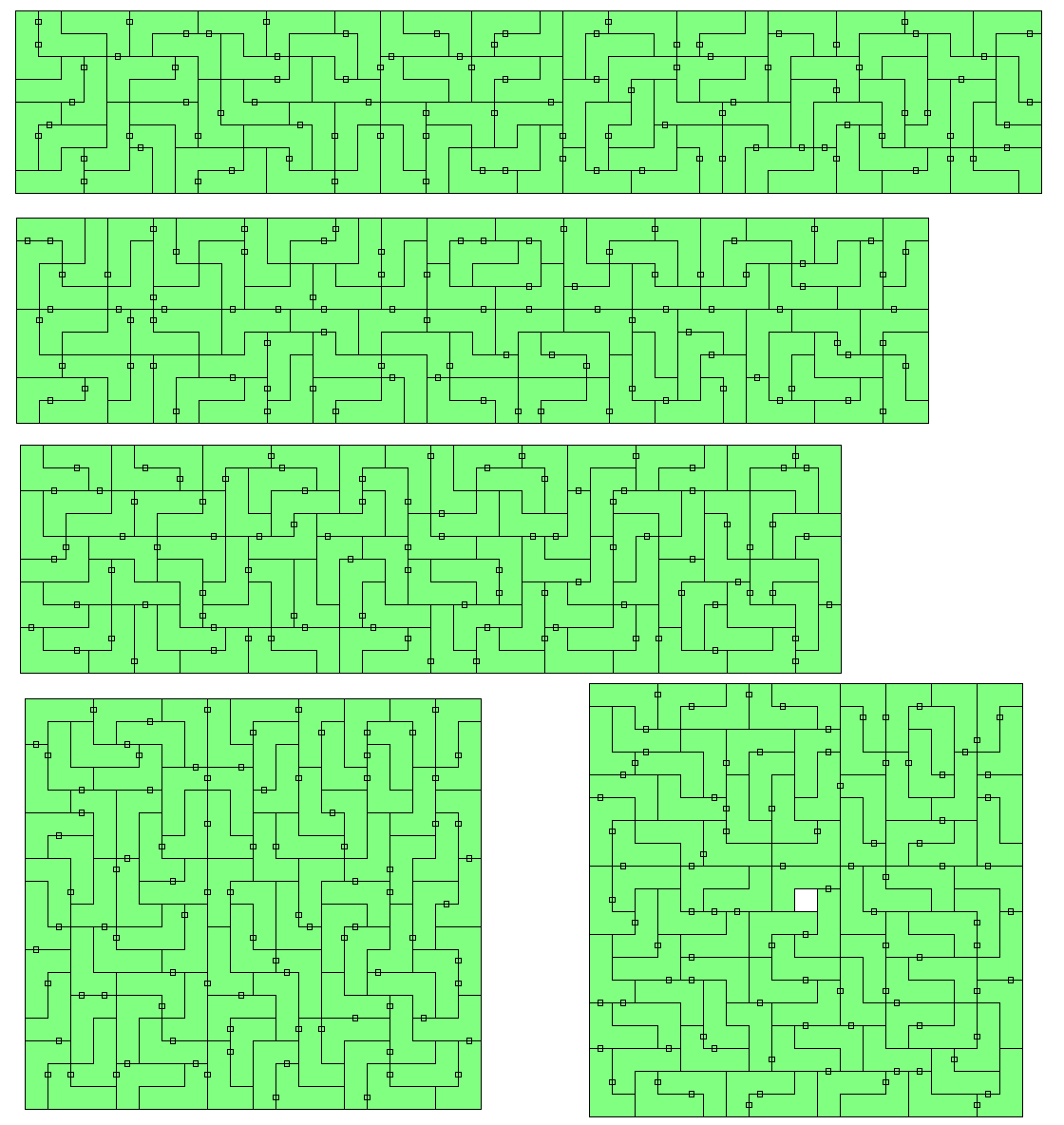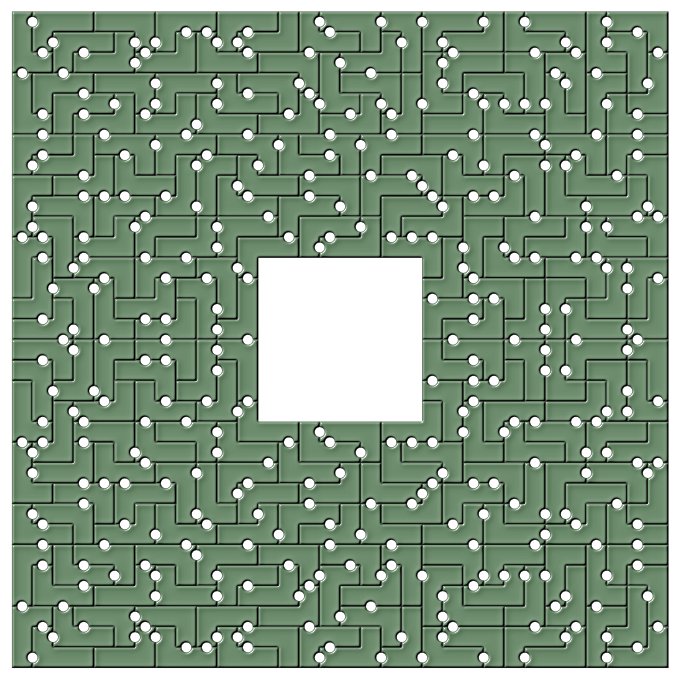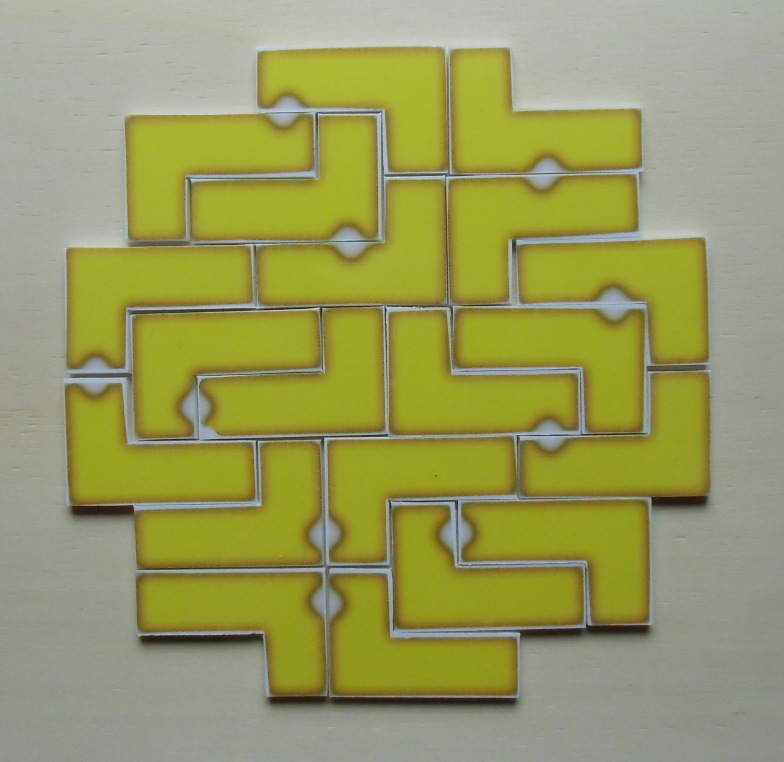

| Number of Notches | Number of Pieces | Total Area | Constructions | |
|---|---|---|---|---|
| Two-sided Pieces | k | 10Ck | 4*(10Ck) | |
| 1 | 10 | 40 | 4x10 and 5x8 rectangle, some symmetric figures | |
| 2 | 45 | 180 | No rectangles, because 180 isn't a multiple of 8 |
|
| 3 | 120 | 480 | 10x48, 12x40, 15x32, 16x30, 18x20 rectangles, 23²-7² square ring |
|
| One-sided Pieces | k | 2*(10Ck) | 8*(10Ck) | |
| 1 | 20 | 80 | 4x20, 5x16, 9x10 rectangles, 9²-1 square ring, some symmetric figures |
|
| 2 | 90 | 360 | 8x40, 9x40, 10x36 rectangles, 19²-1² square ring | |
| 3 | 240 | 960 | 10x96, 12x80, 15x64, 16x60, 20x48, 24x40, 30x32 rectangles, 32²-8² square ring |
